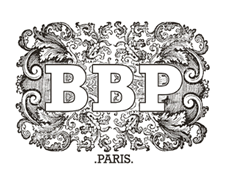There is no denying that Sauvignon Blanc is one of the most versatile wines available. You can find it at almost any restaurant, and it’s abundant in bottle stores and online wine shops too. However, there’s every reason to believe that its versatility to pair beautifully with almost any dish is down to the significant variety available. Below, we outline the various Sauvignon Blanc option from different parts of the world.
What Are My Options?
If you were to leave the country of origin out of the equation, you would find there are two main Sauvignon Blanc kinds: aged and stainless. Aside from the difference of taste, another significant difference is the price tag, especially on a restaurant menu.
The most common variety of Sauvignon Blanc is unoaked. Unoaked wine refers to its fermentation process in a concrete vat or even a stainless steel one which is becoming more common. Typically, this fermentation style lends itself to a lower price tag, while still producing wine with high acidity and bold, fruity flavours.
Aged Sauvignon Blanc, which is barrel-fermented, is more of a refined Sauvignon Blanc for delicate palates and those looking to spend a little more. The wine is aged in lees which is essentially dead yeast, and the result is a far creamier wine that dances on the palate. Wine producers also have a little fun with the aging process, adding butter, lemon oil, and even lemon curd for a burst of flavour for a pleasant surprise. However, the intricacies of the fermentation process are reflected in the price tag. In saying that, you may be able to buy it cheaper if you look at various online wine distributors.
Sauvignon Blanc Varieties by Country
France: France is by far the biggest producer of Sauvignon Blanc, with significant production occurring in Loire, Bordeaux, Languedoc-Roussillon. In Loire, you can expect hints of honeydew melon, high acidity levels, and even a slight hint of lime. However, high-end wines are typically fruitier with hints of fennel, lemongrass, and peach. These wines are commonly found in any restaurant throughout France.
In Bordeaux, the wine tends to be a little more on the light side, while in Bordeaux and Languedoc-Roussillon, you will enjoy the citrus element, minerals, and plenty of fruity hints from passionfruit, lemon, and grapefruit.
New Zealand: New Zealand is also another country known for its wine and produces more Sauvignon Blanc grapes than anything else. When you buy Sauvignon Blanc from New Zealand, you get to enjoy the punch from the gooseberries and passionfruit, as well as the robust acidity and light-medium body.
Chile: If you prefer fruity Sauvignon Blanc, Chile produces some of the finest. Their wine is quite high in salinity and acidity, as well as featuring subtle hints of lime, banana, pineapple, and even grass.
Australia: Australia is also very proud of its ability to create a beautiful bottle of wine, even if it faces the challenges of being a hot climate. In South Australia and Adelaide Hills, the Sauvignon Blanc is typically quite fruity with high levels of acidity and light in body. In Western Australia, however, the wine tends to be packed full of minerals, light in body, and have hints of passionfruit, chervil, and even capsicum. It’s readily available in bottle stores and online wine providers.
Sauvignon Blanc is produced all around the world, not only in these places above, but in other countries and continents such as South Africa, Spain, Italy, and the United States. Each environment offers an exciting new flavour possibility, so what are you going to try the next time you’re out for dinner at a restaurant?

